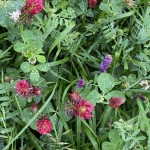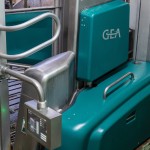Napier Port addresses climate change
Napier Port releases second climate change related disclosure report.
Added 2 years ago
By Brenda Newth
In our last newsletter we reported that Napier Port would explore green hydrogen solutions. This month we look at the Port’s climate change disclosures.
Late last year, Napier Port released its second Climate Change Related Disclosure Report, marking an important milestone on its journey to reduce emissions and become a more sustainable business.
The Port’s emissions inventory has been externally audited for the first time, by Toitū Envirocare, providing a reliable baseline for measuring progress against targets.
The Port’s business is exposed to climate-related risks, including transport links and the impact of climate change on the community and customers. It intends to work collaboratively with relevant territorial authorities and community groups, sharing information and developing solutions, to deliver a more resilient business and region. During the past financial year the Port has been actively sharing climate-related information with Hawke’s Bay Regional Council’s Climate Action Hub.
In the previous report, 53 climate related risks and opportunities were identified, which were again reviewed this year.
The impacts identified as most material in 2021 remain relevant in 2022: increase in sea level, extreme rainfall events, erosion, drought, global shipping changes, and government regulations to encourage a shift to a low-carbon economy (resulting in higher fuel costs), a shift to alternative fuels, and increased use of rail.
As well as assessing the likelihood of each major physical risk, the report also assigns likely timeframes, financial implications, and risk mitigation.
- Sea level rise – financial implications $10m-$15m
- Extreme rainfall event – financial implications to be determined (TBD)
- Erosion – financial implications $10m-$15m
- Drought – financial implications $5m
Transition impacts of climate change caused by strong climate change policy are a mix of risks and opportunities for the Port. The most material are:
- Government regulation
- to encourage shift to low carbon economy results in higher fuel costs – financial implications TBD
- to encourage shift to alternative fuels - financial implications TBD
- to encourage increased use of rail - financial implications >$10m
- Shipping – trend to larger ships and changes in ship to shore power requirements
After defining its greenhouse gas inventory and emissions profile in 2021, this year the Port has established a base year for emissions reporting.
Total carbon emissions were 9,744.4 tonnes (compared to 10,284.3 tonnes in 2021), coinciding with a drop in cargo volumes, which led to decrease in fuel use by cranes, tugs, pilot boat, and diesel generators.
Napier Port has a number of de-carbonisation initiatives underway:
- 3 electric vehicles and 2 hybrid vehicles introduced
- 2 Eco Reachstackers ordered
- Increased use of LED in floodlight towers (now 14 towers up from 9)
- 50% reduction in air travel, and offsetting emissions for domestic travel
- Investigating electrification/alternate fuel for tugs, cranes, and forklifts
- Investigating options for hydrogen use and production
The Port has also developed an emissions reduction strategy this past year, the main components are:
- Reduce diesel consumption
- Align investment in low emissions technology with the Port’s asset renewal programme, any future container terminal transformation programme, and availability of emerging technology
- Grow electrical infrastructure through potential high capacity upgrades
- Mandatory consideration of low emissions technology in any investment or business case
- Explore the possibility of establishing an internal price of carbon to be used in investment or business development decisions
Read Napier Port’s 2022 Climate Change Related Disclosure report here.
Join the conversation
Be the first to leave a comment.
Leave a comment
All comments are reviewed before they are published on the website. Your email address will not be published.




Family-Owned Farm Embraces Regenerative Agriculture to Grow and Educate


